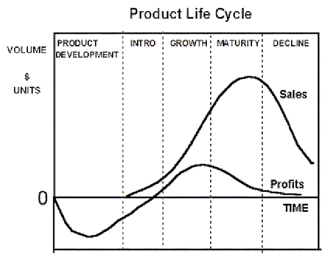Under Construction 
 This is a complex topic and books have been written about it. I don't begin to cover it here, but may come back some time.
This is a complex topic and books have been written about it. I don't begin to cover it here, but may come back some time.
I started thinking about it when, in 2011, I had to replace my Adidas Stan Smith tennis shoes, a model introduced in 1965 which sold over 30 million pairs. When I looked for a shoe recommended in last years tennis magazine I found it had already been replaced by a new model.
Adidas had 70 different models of tennis shoes on their web site and sold a places like Amazon. Whatever happened to companies producing a flagship model which had a life cycle of 5-10 years. It seems the shotgun approach is the current marketing mode.
My son is still using my 1970 Privetta Muir Trail hiking boots. Another classic.
A variety of factors have lead to shorter product life cycles.
- Lower costs of retooling to produce a new product, due to flexibility in manufacturing processes and other factors, the product life cycle has become shorter.
- Faster innovation
- More copmpetition - Companies have to have a better product with the latest technology to get publicity and out hype the competition.
This results in product cannibalization, introducing a new product before your old one has reached the downward slope of it sales curve.
When I searched for the Adidas Barricade tennis shoe on amazon in March 2011 it came up with 4 models, 2, IV, V, and 6.0.
It's all about market share.
My cynical nature says part of it is to make it harder for organizations like Consumer Reports or Cnet to review a product. You can make a cosmetic change to a product and claim that it is better than the previous one which got a bad review.
Links:
Product Life Cycle at Scribd.com
Product Life Cycle and netmba.com
Articles -- Penn State Smeal College of Business
Product Life Cycle | HelpSME.com
Hunter M. G., Tan F. B. Advanced Topics in Global Information Management (Vol. 3) / Stage Theories About the E-Tailing Venture
Technology adoption Cycle
Return to Finance
last updated 18 Mar 2011
| 